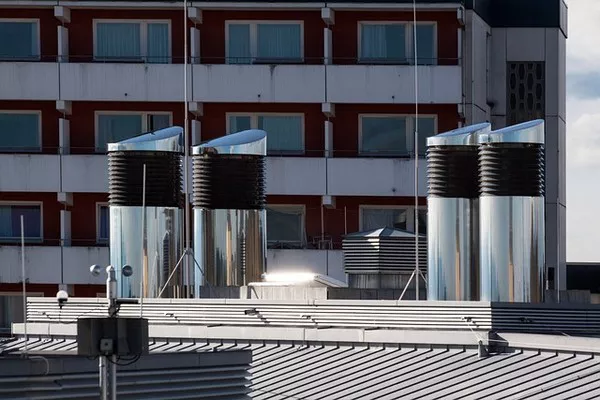In the complex world of fluid dynamics, the precise measurement of fluid flow is paramount. Whether in industrial processes, environmental monitoring, or research applications, understanding how much fluid moves through a system is critical for efficiency, safety, and compliance. Flow meters, an essential component in this arena, serve as the eyes and ears of fluid systems, enabling engineers and scientists to monitor, control, and optimize a wide range of processes. In this article, we will explore the various applications and types of flow meters, shedding light on their significance in contemporary industries.
The Importance of Flow Measurement
Flow meters, also known as flow sensors or flow gauges, are devices used to quantify the rate of fluid movement within a system. These systems can include liquids, gases, or even slurries. The ability to accurately measure flow rates holds immense significance across various industries and for several reasons:
Process Optimization: In industrial settings, optimizing the flow of materials, such as chemicals, water, or oil, is crucial for maintaining efficiency and cost-effectiveness. Flow meters provide real-time data that helps operators make informed decisions and adjustments to maximize productivity.
Quality Control: In manufacturing, maintaining consistent flow rates is critical to ensuring product quality. Flow meters are used to monitor the flow of raw materials and control the mixing of components, guaranteeing that the final product meets specifications.
Resource Management: In environmental monitoring and management, flow meters are employed to assess water usage, detect leaks, and monitor wastewater discharge. Accurate flow measurements are instrumental in conserving precious resources and complying with regulations.
Energy Efficiency: In HVAC systems, flow meters help maintain optimal temperature control by monitoring the flow of heating or cooling fluids. This leads to energy savings and reduced operational costs.
Safety: In industries handling hazardous materials, such as chemicals or petroleum, flow meters play a crucial role in ensuring safe transport and preventing accidents. Monitoring flow rates helps detect anomalies that may indicate leaks or equipment failures.
Types of Flow Meters
Flow meters come in various types, each tailored to specific applications and environments. The choice of flow meter depends on factors like the type of fluid, flow rate, pressure, temperature, and the required level of accuracy. Here are some commonly used flow meter types:
Differential Pressure Flow Meters: These meters operate on the principle of pressure drop across a constriction in the flow path. Orifice plates, venturi tubes, and flow nozzles are examples of this type. They are cost-effective and suitable for a wide range of applications.
Magnetic Flow Meters: Ideal for measuring the flow of conductive liquids (e.g., water and slurries), magnetic flow meters use Faraday’s law of electromagnetic induction. They offer high accuracy and can handle corrosive or abrasive fluids.
Ultrasonic Flow Meters: Ultrasonic meters use sound waves to measure flow velocity. They are non-invasive and work well for a variety of fluids, making them suitable for both clean and dirty applications.
Coriolis Mass Flow Meters: These meters measure the mass flow rate by exploiting the Coriolis effect, which causes a vibrating tube to twist when subjected to a fluid flow. They are highly accurate and versatile but tend to be more expensive.
Vortex Flow Meters: Vortex meters detect the vortices generated by a fluid passing by a bluff body. They are often used for steam flow measurement and can handle high-temperature and high-pressure conditions.
Turbine Flow Meters: Turbine meters consist of a rotor with blades inserted into the flowing fluid. The rotation of the rotor is proportional to the flow rate, making them suitable for measuring clean, low-viscosity liquids and gases.
Positive Displacement Flow Meters: These meters work by dividing the fluid into fixed-volume increments and counting the number of these increments to determine the flow rate. They are highly accurate but may not be suitable for all fluid types.
Rotameters: Rotameters are simple devices with a tapered tube and a floating float. The float position indicates the flow rate. They are commonly used for gas and liquid flow measurements in laboratories and small-scale applications.
Applications of Flow Meters
Flow meters find applications in a multitude of industries, ranging from manufacturing and energy production to healthcare and environmental monitoring. Here are some notable examples:
Oil and Gas Industry: Flow meters are used to measure the flow of crude oil, natural gas, and refined products in pipelines and refineries. They are crucial for custody transfer and process control.
Chemical Processing: In chemical plants, flow meters ensure accurate dosing of chemicals and monitor the flow of reactants and products. They help maintain process safety and product quality.
Water Management: Municipalities use flow meters to monitor water consumption, detect leaks in water distribution systems, and assess wastewater discharge into treatment plants.
Food and Beverage Production: Flow meters control the flow of ingredients in food processing, ensuring consistent product quality and minimizing waste.
Pharmaceuticals: Flow meters are essential in pharmaceutical manufacturing for precise control of liquid ingredients in drug formulation.
Aerospace: Flow meters are used in aircraft and spacecraft to monitor fuel consumption and hydraulic fluid flow, contributing to safety and efficiency.
Healthcare: In medical devices, flow meters are employed for precise delivery of gases and fluids in applications such as anesthesia and respiratory therapy.
Conclusion
Flow meters serve as indispensable tools for measuring fluid flow rates across diverse applications and industries. They facilitate process optimization, quality control, resource management, energy efficiency, and safety. By providing accurate and real-time data, flow meters enable engineers, scientists, and operators to make informed decisions that impact productivity, cost-effectiveness, and compliance with regulatory standards.
As technology continues to advance, flow meter designs and capabilities evolve to meet the ever-changing demands of modern industries. Whether it’s the precision of Coriolis mass flow meters or the versatility of ultrasonic flow meters, these devices continue to play a vital role in maintaining the smooth and efficient operation of fluid systems worldwide. Understanding their importance is key to appreciating the profound impact they have on our daily lives and the industries that drive global progress.

